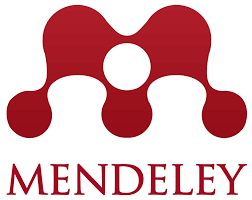Publication ethics in the Journal of Innovation in Chemistry Education refers to COPE (Committee on Publication Ethics) and LIPI Head Regulation Number 5 of 2014 concerning the Code of Ethics for Scientific Publications.
The statement of the code of ethics for scientific publications is a statement of the code of ethics by all parties (authors, editorial board, and bestari partners) relating to scientific publications in the Journal of Innovation in Chemistry Education which must comply with the publication ethics mentioned above. Statement of the Code of Ethics for Scientific Publications by the Head of LIPI Regulation No. 5 of 2014 concerning the Code of Ethics for Scientific Publications, which basically upholds ethical values in three publications, namely:
- Neutrality, which is free from conflicts of interest in publication management;
- Justice, which grants authorship rights to those entitled to be authors; and
- Honesty, which is free from duplication, fabrication, forgery and plagiarism (DF2P) in publications.
The following is a brief publication ethics applied by the Journal of Innovation in Chemistry Education.
Duties and Responsibilities of Journal Manager
- Determine the name of the journal, scientific scope, periodicity, and accreditation if necessary;
- Determine the membership of the editorial board;
- Defines the relationship between publishers, editors, publishers and other parties in a contract;
- Respect matters of a confidential nature, both for contributing researchers, writers, editors and publisher partners;
- Implement norms and provisions regarding intellectual property rights, especially copyright;
- Review journal policies and convey them to authors, editorial board, review partners, and readers;
- Create a code of conduct guide for editors and review partners;
- Publish journals regularly;
- Guarantee the availability of funding sources for the sustainability of journal publication;
- Building cooperation and marketing networks; and
- Prepare permits and other legal aspects.
Duties and Responsibilities of a Journal Editor
- Meeting the needs of readers and writers;
- Strive to continuously improve the quality of publications;
- Implement processes to ensure the quality of published written work;
- Prioritize freedom of opinion objectively;
- Maintaining the integrity of the author's academic track record;
- Deliver corrections, clarifications, withdrawals and apologies when necessary;
- Responsible for the style and format of the written work, while the content and all statements in the written work are the responsibility of the author;8
- Actively solicit the opinions of authors, readers, bestari partners, and editorial board members to improve the quality of publications;
- Encourage assessment of journals if there are findings;
- Support initiatives to reduce research and publication errors by asking authors to attach an ethical clearance form that has been approved by the ethical clearance Commission;
- Support initiatives to educate researchers about publication ethics;
- Examine the effect of publication policies on the attitudes of authors and bestari partners and improve them to increase responsibility and minimize errors;
- Have an open mind to new opinions or other people's views that may conflict with personal opinions;
- Do not maintain your own, author's, or third party's opinions which could result in non-objective decisions; and
- Encourage writers to improve their written work until it is suitable for publication.
Duties and Responsibilities of Bestari Partners (Peer-Reviewers)
- Receive an assignment from the editor to review written work and submit the review to the editor as material for determining the suitability of a written work for publication;
- Not reviewing written works involving him, either directly or indirectly;
- Maintain the confidentiality of the author by not disseminating the results of corrections, suggestions and recommendations for the manuscript he/she reviewed;
- Encourage writers to improve their manuscripts;
- Review written work that has been corrected according to predetermined standards; and
- Review manuscripts in a timely manner in accordance with the style of the journal and based on scientific principles (data collection methods, legality of authors, drawing conclusions, etc.).
Author Duties and Responsibilities
- Ensure that those included in the list of authors meet the criteria as authors;
- Collectively responsible for the work and content of the manuscript/article which includes methods, analysis, calculations and details;
- State the origin of resources (including funding), either directly or indirectly;
- Explain the limitations in the research;
- Respond to comments made by bestari partners in a professional and timely manner;
- Inform the editor if he will withdraw his written work; and
- Make a statement that the written work submitted for publication is original, has never been published anywhere in any language, and is not in the process of being submitted to another publisher.














